Our Priority
The Shared Future Coalition focuses on preventing the misuse of prescription drugs among adolescents. “Youth who misuse prescription medications are also more likely to report use of other drugs. Multiple studies have revealed associations between prescription drug misuse and higher rates of cigarette smoking; heavy episodic drinking; and marijuana, cocaine, and other illicit drug use among U.S. adolescents, young adults, and college students.”1 Adolescents who receive a legitimate prescription for painkillers (or “opioids”, such as Vicodin) have a greater risk of future opioid misuse, particularly among young adults who have little, to no history of drug use.2 A Deschutes County study in 2016 on the misuse of prescription medication among 12 to 25 year olds revealed that people in this age range were more likely to misuse behavioral health medications such as ADHD, anti-anxiety, or anti-depressant medications, rather than prescription painkillers.3
Prescription medications/drugs are divided into controlled or non-controlled substances. Both the Drug Enforcement Agency (DEA) and the Food and Drug Administration (FDA) are granted power to classify substances under the Controlled Substances Act.
- Controlled prescription drugs are categorized (“scheduled”) by their relative abuse potential, and likelihood of causing dependence when abused.* They require an authorized medical professional to determine the proper dosage and frequency of use. An authorized pharmacist must distributed them. Examples of controlled substances may include brand names such as Vicodin, Xanax, Ativan, Valium Ritalin, and Adderall.
- Non-controlled prescription drugs are primarily for infections or chronic medical conditions. They require an authorized medical professional to determine the proper dosage and frequency of use, and an authorized pharmacist must distributed them. Examples of non-controlled prescription drugs may include blood pressure medication, asthma inhalers, antibiotics, and insulin.
*Marijuana/cannabis used for medical purposes does not currently meet the definition of a prescription drug. Marijuana/cannabis may be recommended by a medical professional, but dosing, frequency of use, and other prescription criteria are not dictated by a recommendation in the same way as prescription drugs approved by the US FDA.
Our Position
Young people under the age of 25 and other vulnerable populations are particularly susceptible to the effects of prescription drug misuse.2,4,5 Prescription drugs can be dangerous when not used properly and should be taken only as directed by a qualified medical/behavioral health care provider. Securely storing prescription drugs at home and disposing prescription drugs safely in official drug disposal drop boxes are actions that we can all take to protect our loved ones and our community.
Supporting Data
Cause for Concern
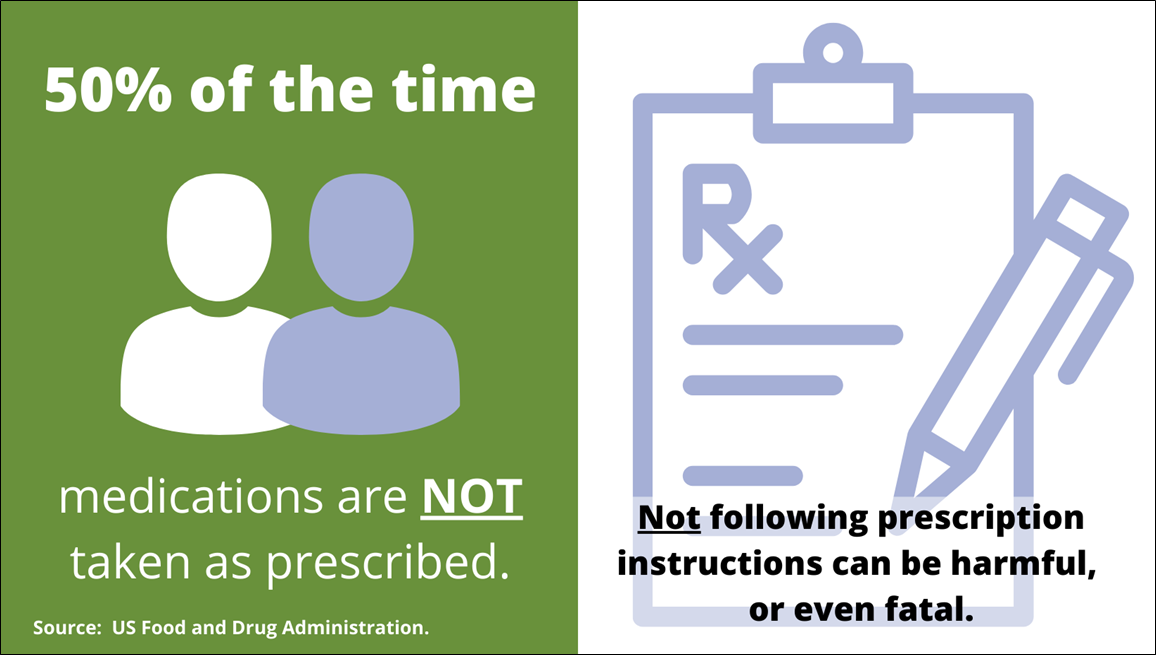
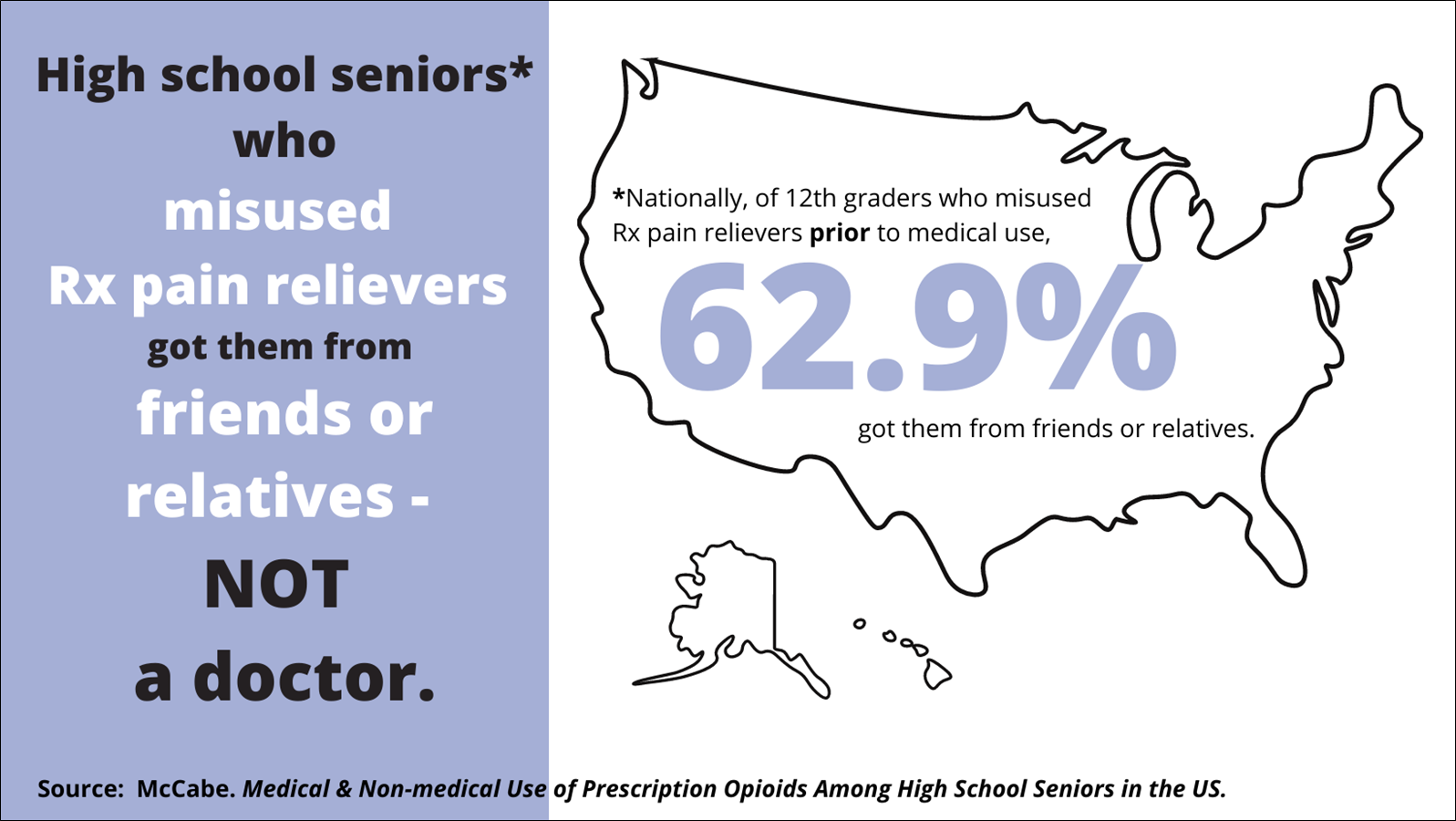
Cause for Hope
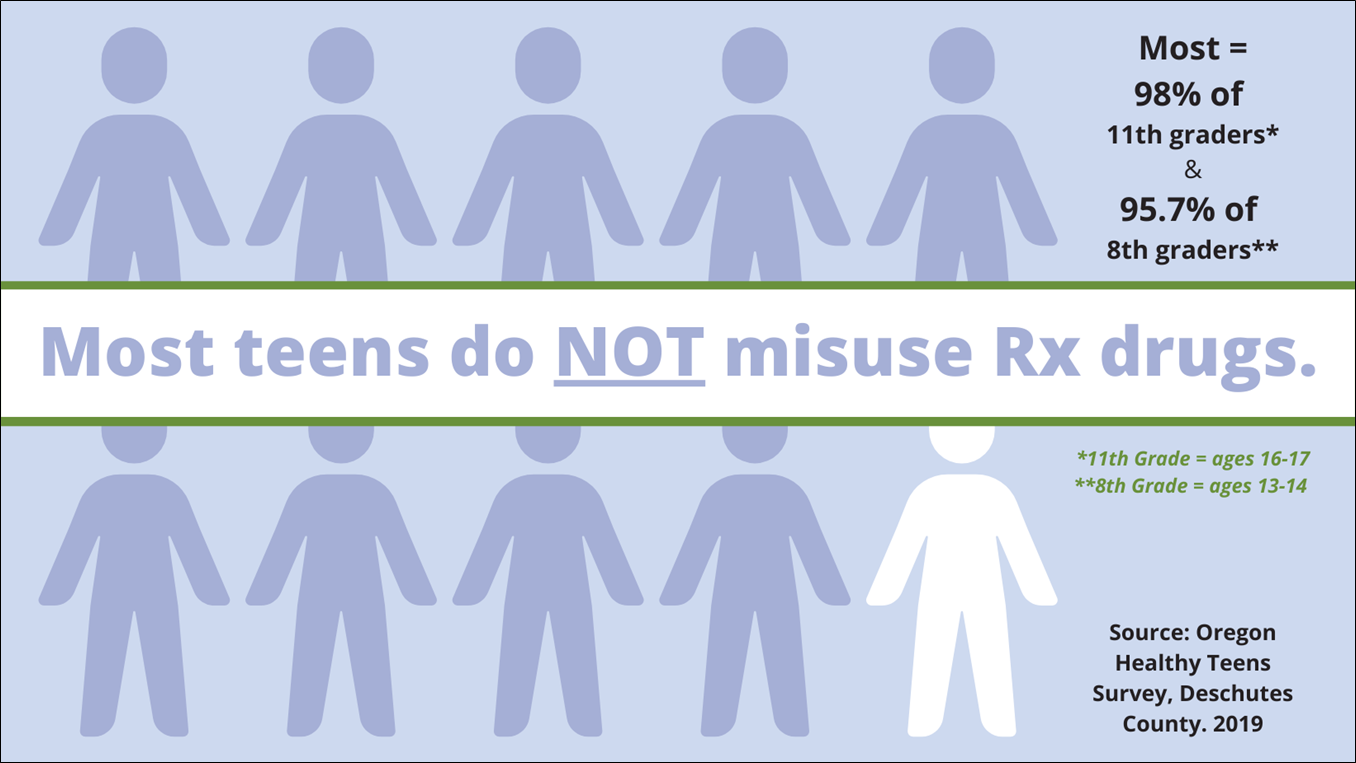

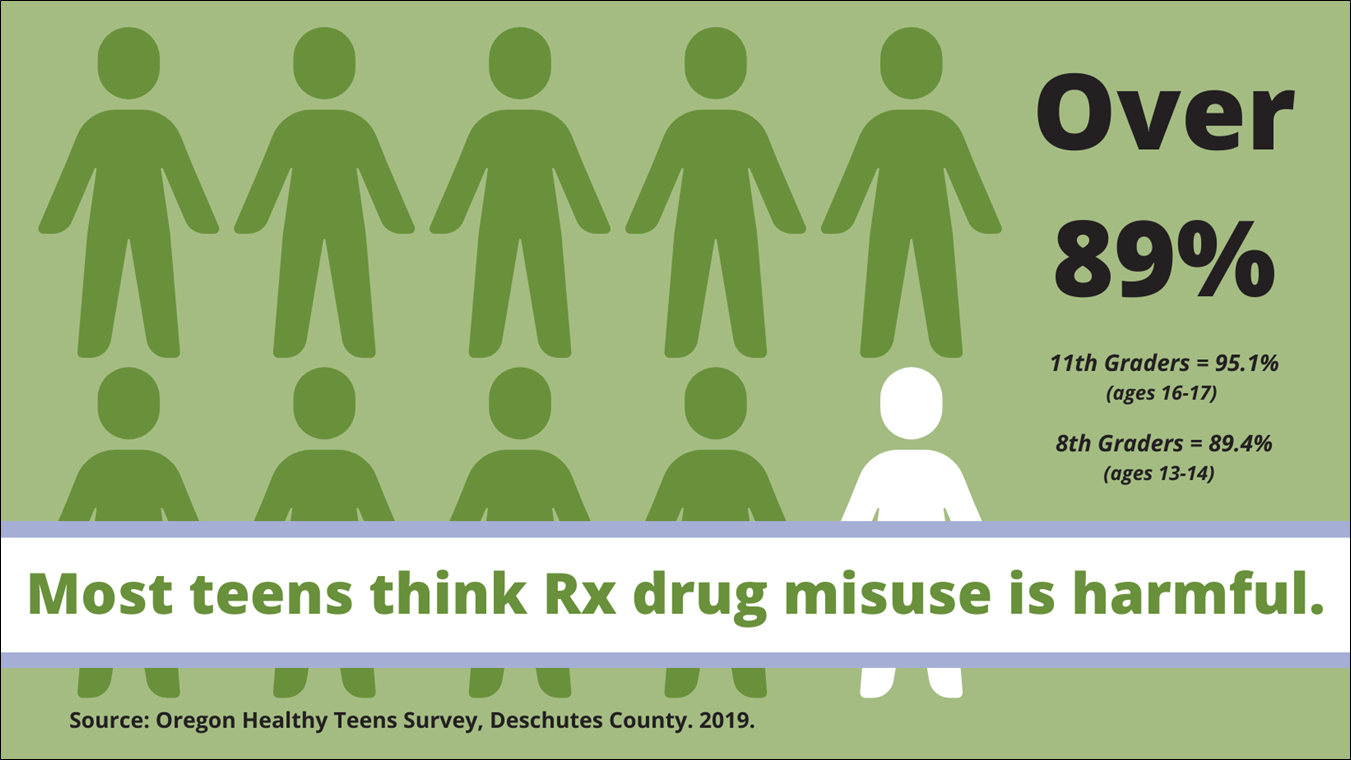
Our Solutions
Our high level goal is to prevent misuse of prescription drugs by young people, ages 18-25.
The Shared Future Coalition recognizes that the negative impacts of prescription drug misuse are not the same for all people in Deschutes County. The Shared Future Coalition strives to meet the needs of those who are at greatest risk of misusing prescription medications, as well as the needs of people who are experiencing higher levels of negative impact from prescription drug misuse. Young people under the age of 25 and other vulnerable populations are particularly susceptible to the effects of prescription drug misuse, as noted in our position statement.
Example Projects
Take Meds Seriously Oregon
- Public awareness campaign promoting safe use, safe storage, and safe disposal of prescription medications.
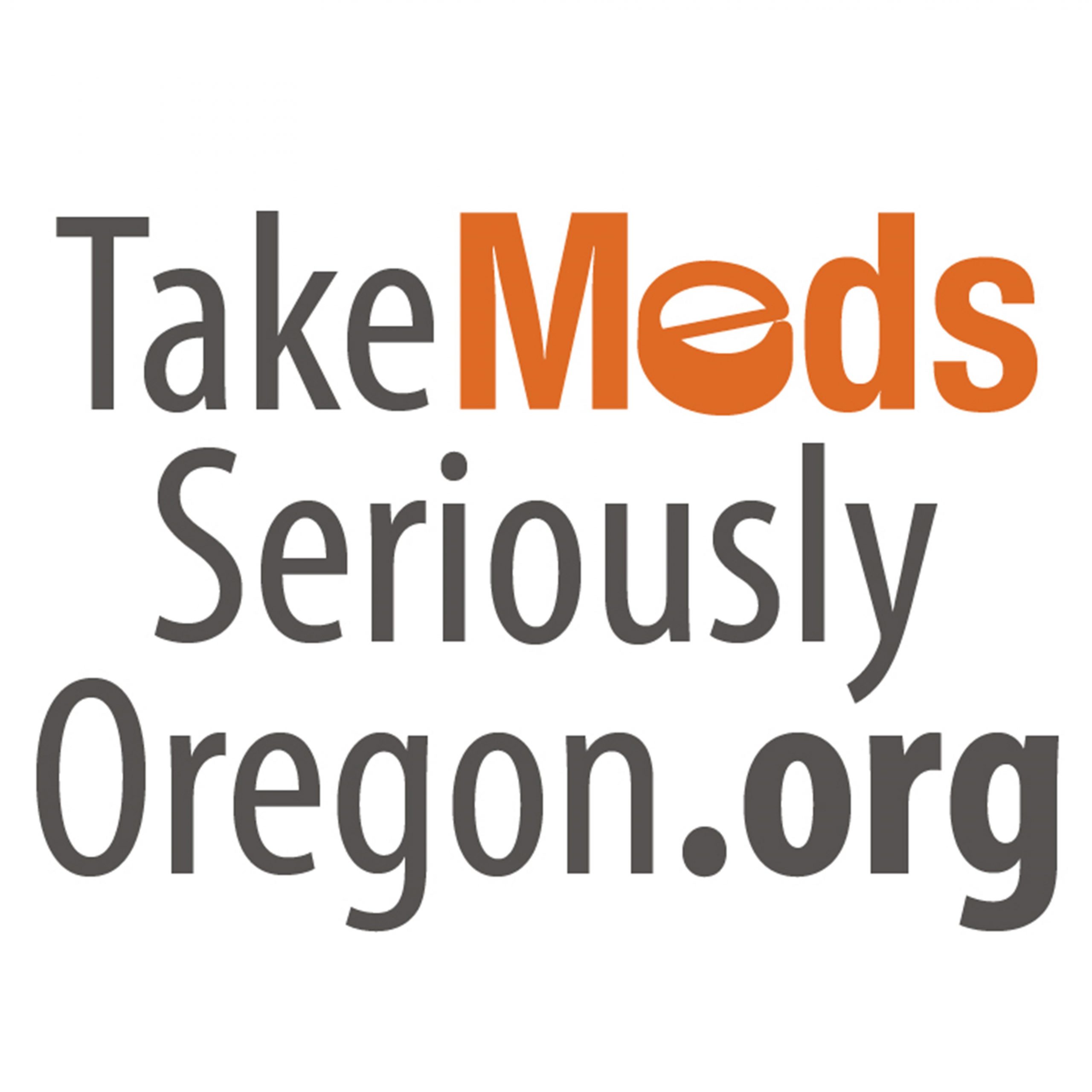
“UpShift” program in Bend-La Pine Schools and Sisters School District
- All students who violate school district drug use policies have access to individualized services designed to stop prescription drug misuse and other drug use
- Services offered have been shown to be effective in research studies
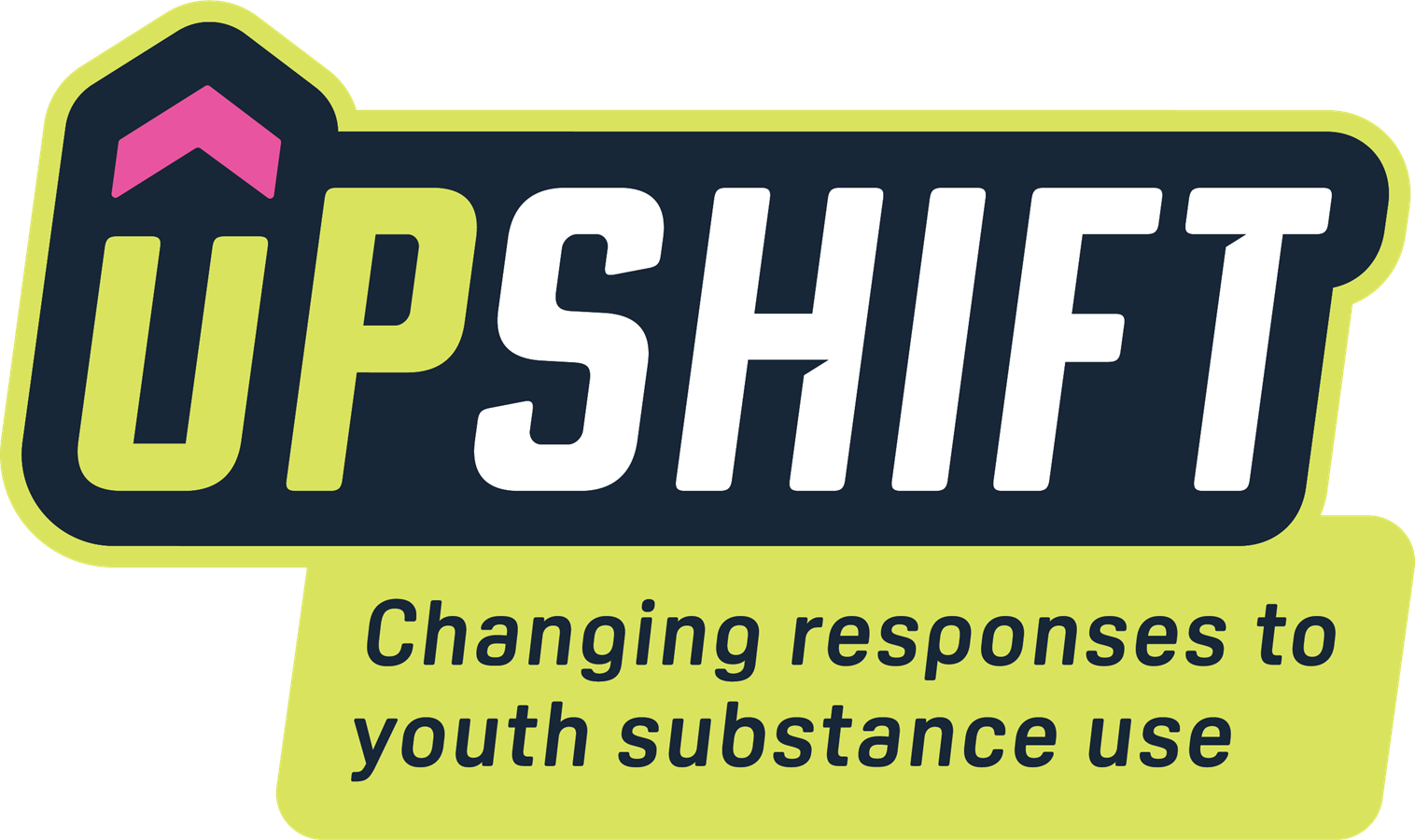
Connect Workshop for Parents
- FREE, two-hour workshop for parents and guardians in Deschutes County to learn factual, unbiased information and skills to start conversations with their kids about misusing prescription drugs and other drug use
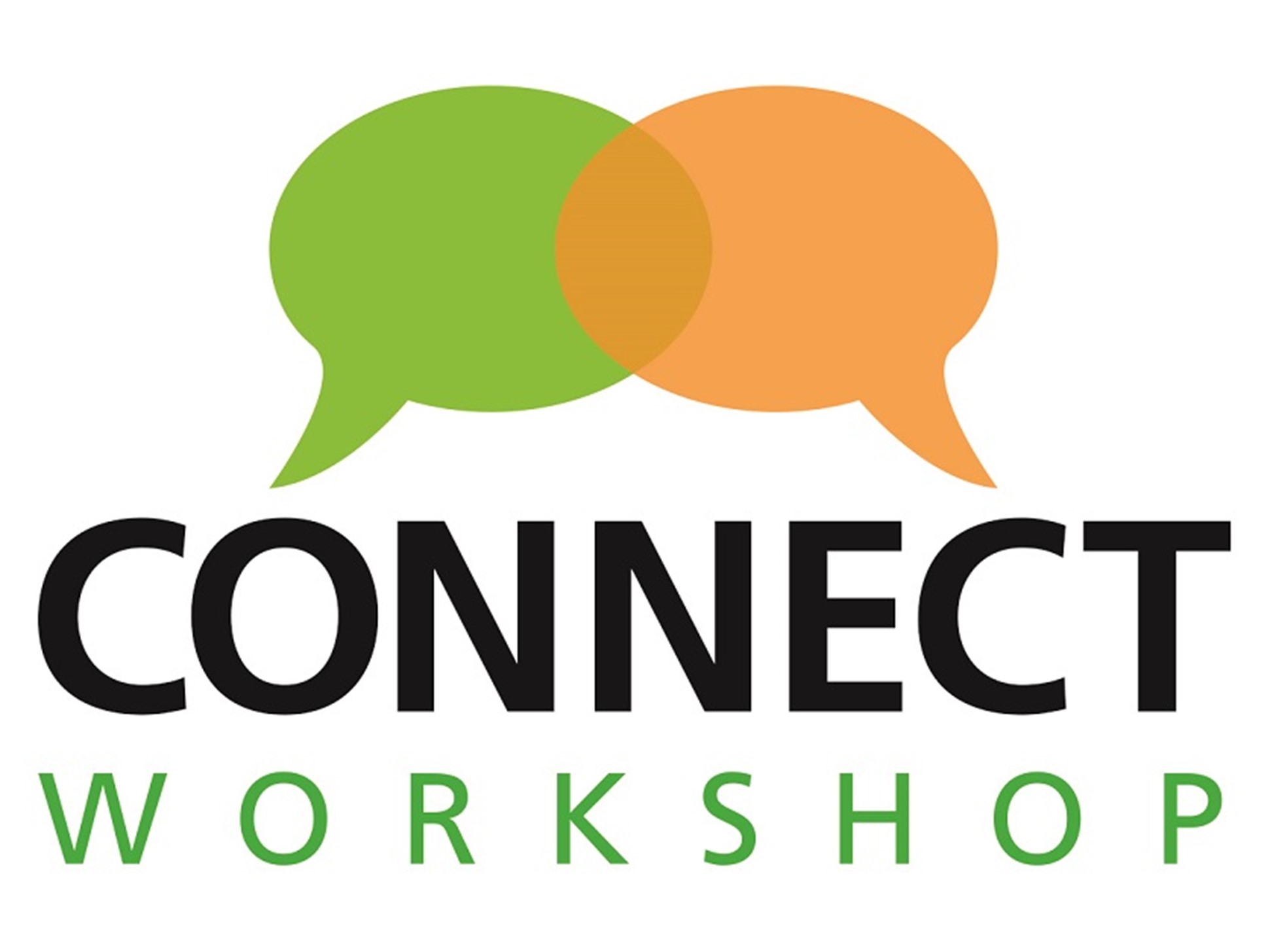
[1] NIDA. (2021, April 13). What is the scope of prescription drug misuse? National Institute on Drug Abuse. Retrieved November 10, 2021, from https://www.drugabuse.gov/publications/research-reports/misuse-prescription-drugs/what-scope-prescription-drug-misuse
[2] Centers for Disease Control and Prevention. (2013, July 5). Vital Signs: Overdoses of Prescription Opioid Pain Relievers and Other Drugs Among Women — United States, 1999–2010. CDC : Morbidity and Mortality Weekly Report (MMWR). Retrieved November 10, 2021, from https://www.cdc.gov/mmwr/preview/mmwrhtml/
mm6226a3.htm
[3] Deschutes County Health Services and the Shared Future Coalition. (2016). Prescription Drug Abuse Among Young People Age 12–25 in Deschutes County. Deschutes County Health Services.
[4] Volkow N. D. (2009). Teen prescription drug abuse a major health concern. Tennessee medicine : journal of the Tennessee Medical Association, 102(4), 28–29. https://www.ncbi.nlm.nih.gov/pmc/articles/PMC4827331/
[5] Substance Abuse and Mental Health Services Administration. (n.d.). Rise in Prescription Drug Misuse and Abuse Impacting Teens. SAMHSA. Retrieved November 10, 2021, from https://www.samhsa.gov/homelessness-programs-resources/hpr-resources/rise-prescription-drug-misuse-abuse-impacting-teens
[6] U.S. Food and Drug Administration. (2016, February 16). Why You Need to Take Your Medications as Prescribed or Instructed. Retrieved November 10, 2021, from https://www.fda.gov/drugs/special-features/why-you-need-take-your-medications-prescribed-or-instructed
[7] McCabe, S. E. (2012). Medical and Nonmedical Use of Prescription Opioids Among High School Seniors in the United States. Archives of Pediatrics & Adolescent Medicine, 166(9), 797. https://doi.org/10.1001/
archpediatrics.2012.85
[8] Deschutes County Health Services and the Shared Future Coalition. (2016). Prescription Drug Abuse Among Young People Age 12–25 in Deschutes County. Deschutes County Health Services.
[9] Ibid.
[10] Oregon Health Authority. (2018). Student Wellness Survey. Health Surveys : Oregon Health Authority. Retrieved September 15, 2021, from https://www.oregon.gov/oha/PH/BIRTHDEATHCERTIFICATES/SURVEYS/Pages/Student-Wellness-Survey.aspx
[11] Oregon Health Authority. (2016-2018). Student Wellness Survey. Health Surveys : Oregon Health Authority. Retrieved September 15, 2021, from https://www.oregon.gov/oha/PH/BIRTHDEATHCERTIFICATES/SURVEYS/
Pages/Student-Wellness-Survey.aspx
[12] Oregon Health Authority. (2012-2018). Student Wellness Survey. Health Surveys : Oregon Health Authority. Retrieved September 15, 2021, from https://www.oregon.gov/oha/PH/BIRTHDEATHCERTIFICATES/SURVEYS/
Pages/Student-Wellness-Survey.aspx
[13] Oregon Health Authority. (2019). 2019 Results : Oregon Healthy Teens Survey. Oregon Health Authority : Oregon Healthy Teens Survey. Retrieved November 3, 2021, from https://www.oregon.gov/oha/PH/BIRTHDEATH
CERTIFICATES/SURVEYS/OREGONHEALTHYTEENS/Pages/2019.aspx